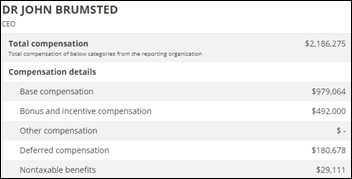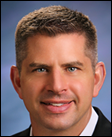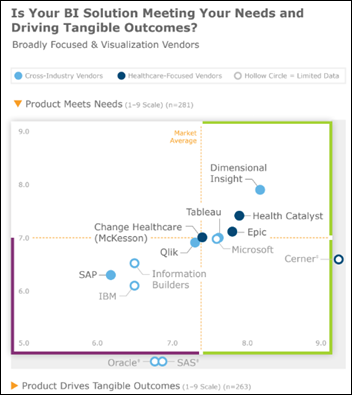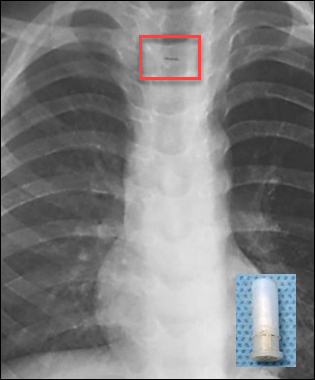Weekender 8/17/18

Weekly News Recap
- Best Buy acquires GreatCall, which offers emergency response services and digital health devices for seniors, for $800 million
- Alphabet invests $375 million in data- and technology-focused insurance startup Oscar, following participation by two Alphabet subsidiaries in a funding round a few months ago that valued the company at over $3 billion
- Amazon, Google, IBM, Microsoft, Salesforce, and Oracle pledge to support interoperability at Monday’s Blue Button 2.0 Developer Conference
- The Wall Street Journal posts another critical review of IBM Watson Health for oncology, saying that “the diagnosis is gloomy” for Watson’s ability to improve cancer treatments.
Best Reader Comments
What do Amazon, Google, IBM, Microsoft, Salesforce, and Oracle have in common? No impact in healthcare interoperability despite multiple attempts. (Fourth Hanson Brother)
How does their “support” of interoperability actually translate into something meaningful? Are they going to somehow put the screws to organizations (both vendors and healthcare groups) who are have a greater incentive to protect their own revenues? (RobLS)
The 10% of reality that isn’t perception trumps the 90% at the most inconvenient times. (LFI Masuka)
Watson for Oncology isn’t an AI that fights cancer, it’s an unproven mechanical turk that represents the guesses of a small group of doctors. (Mechanical Turk)
Watercooler Talk Tidbits


Readers funded the DonorsChoose teacher grant request of Ms. C, who asked for LCD writing boards for her Tennessee kindergarten class. She reports, “We have been using our LCD Writing Tablets every day! My students love to use these boards to practice writing sight words, short vowel CVC words, their names, numbers, and so much more. They have eliminated the mess of dry-erase markers and promote student engagement. They allow me to check my students’ answers and work easily, provide corrections, and allow students to make necessary corrections quickly. These boards are currently one of our favorite things in the classroom. Thanks so much!”

In Spain, a woman who is growing tired of her ED wait (does that make her an impatient patient?) torches the place by igniting an oxygen bottle, requiring the hospital’s evacuation.

A new University of Vermont Medical Center federal filing is published in the middle of heated negotiations with unionized nurses who are working without a contract, likely to be emboldened by the news that it pays two executives more than $2 million, or 29 times the average RN salary. The health system says what health systems and universities always do when huge salaries are made public – we have to pay competitively compared to other academic medical centers to attract and keep executive talent.

New York University will make its medical school tuition-free regardless of financial need, hoping that graduates saddled with reduced debt will consider less-lucrative jobs in primary care and research. Students won’t have to pay the medical school’s $55,000 tuition, but they will still need to cover their estimated $29,000 in living expenses. The announcement was made at the med school’s white coat ceremony, drawing a standing ovation since the change takes effect immediately.
A New York hospital requires visitors to show ID to get an ID badge – which contains their photo and destination — printed with invisible ink that disappears after 24 hours. I’m always surprised that hospitals have few visitor-related incidents other than in the ED since visiting hours have been extended, anyone can wander the halls unmolested (except for the nursery), and security guards rarely wander patient floors. I’ve seen visitors fighting with each other and with employees, family members who tried to kill a patient in their bed, and gang or romantic rivals launching beat-downs at the nursing station. I once talked a newly hospitalized patient out of the gun he was waving around in his room, although I’m still not sure why I thought that was a good idea. It was a small hospital without real security guards and I was the only male on the floor at the time, ill-advisedly succumbing to the impulse to help the frightened the nursing staff and hoping that I had accurately characterized the patient as confused but harmless.
In Case You Missed It
- News 8/17/18
- EPtalk by Dr. Jayne 8/16/18
- Readers Write: A Person-Centered Approach for Success in Intellectual and Developmental Disability Services
- Readers Write: Capturing Patient-Reported Outcomes for Population Health Management Yields Dividends
- News 8/15/18
- Curbside Consult with Dr. Jayne 8/13/18
- HIStalk Interviews Rich Berner, CEO, MDLive
- Monday Morning Update 8/13/18
- What I Wish I’d Known Before … Turning 40
Get Involved
- Join my Rolodex to provide occasional news reaction or ideas
- Contribute regularly as a provider CIO, IT director, or informatics nurse (anonymous or not)
- Be interviewed (providers)
- Deliver an educational webinar (providers)
- Sponsor
- Report a news item or rumor (anonymous or not)
- Sign up for email updates
- Connect on LinkedIn
- Contact Mr. H



























































"A valid concern..." Oh please. Everyone picks the software they like and the origin of that software is an afterthought.…